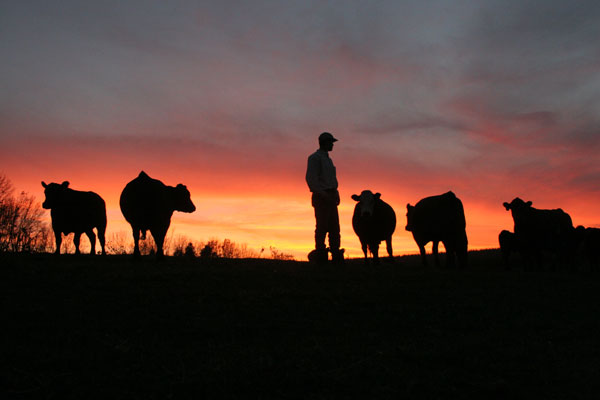March 30, 2015

“We say that we’re growing food, that it’s a noble cause, and that it should take precedence over everything else,” said Dave Daley, who is the fifth generation operating his family’s California ranch.
“If it’s truly a noble cause that takes precedence over everything else, then a lot of people are going to be interested in what we do. So, you can’t say: ‘Growing food is a noble cause, but it’s none of your business how we do it.’ ”
Daley is also interim dean of the College of Agriculture at California State University-Chico. Speaking at February’s Cattlemen’s College in San Antonio, which was sponsored by Zoetis, his charge was to discuss whether livestock agriculture had already lost the debate with consumers about animal welfare.
“I don’t think we’ve lost the battle because I don’t even know if there is a battle,” Daley said. “I don’t think we’re doing badly with animal welfare as an industry.”
Daley detailed the results of a survey of 200 large-scale, progressive cattle producers.

70+ photos showcasing all types of cattle nutrition
Readers share their favorite photos of cattle grazing or steers bellied up to the feedbunk. See reader favorite nutrition photos here.
Unsurprisingly, all said animals should be raised and treated humanely. If there was a reasonable and economic alternative to castration, only 11% said they wouldn’t consider it. Meanwhile, only 15% would ignore a reasonable and economic alternative to branding, and only 2% said cattle producers should not work with animal rights groups to establish mutual understanding.
On the other side of the debate, Daley said, “There is a changing social ethic about animals in this country. You may want to go back in time. You may want to say it doesn’t exist. But you can’t deny it.”
Daley said confinement is the major quibble consumers have with livestock ag. That means beef cattle remain further off their radar, but that doesn’t mean producers should leave the debate to others.
“I think we do a lousy job of communicating. We want to talk, but we don’t want to listen; it’s human nature,” Daley said. He believes those in the cattle business rely too much on science and economics to defend practices, when neither can answer questions of ethics. Plus, he said, we tend to spend the most resources refuting the claims of groups that the general public doesn’t take seriously.
“Give the general public some credit; they know nut cases when they see them. Just because someone disagrees with you, it doesn’t mean they’re stupid, evil or both. Good people can see things differently,” Daley said.
The same goes for producers. “Rather than criticize or mock non-conventional production systems, let the market decide their value,” Daley suggested. And vice versa.
Instead of spending resources to battle extremists, Daley said to focus on maintaining and building trust with the mass majority of consumers whose expectations of animal welfare are reasonable once they understand how much producers care about their stock and why they utilize various practices.
“I don’t think we have to make a lot of change. I think we need to make slow, incremental improvement,” Daley said. “We’ve got time to do what we think is right, rather than wait for someone else to tell us what is right.”
Another, more urgent clock is ticking, though. The horrific reality is an estimated 6 million children in the world will die from malnourishment this year. Yet, up to 2.5 billion more people are projected to join the global population in the next 35 years. Feeding them will require a 60% to 70% increase in food production. Most of that must come from producers with the most production capacity, like those in the U.S.
Producers are up to the challenge, so long as societies and governments let producers use old and emerging technology, in tandem with evolving genetic selection and management.
Unfortunately, such production freedom is not guaranteed, even in the U.S. That’s why finding common ground with consumers matters more than ever.
Cattlemen’s College presentations are available online.
You might also like:
70 photos honor the hardworking cowboys on the ranch
7 U.S. cattle operations honored for stewardship efforts
How Schiefelbein Farms made room on the ranch for nine sons
Prevention and treatment of cow prolapse
Photo Gallery: Home is where you hang your hat
World's largest vertically integrated cattle operation
You May Also Like



